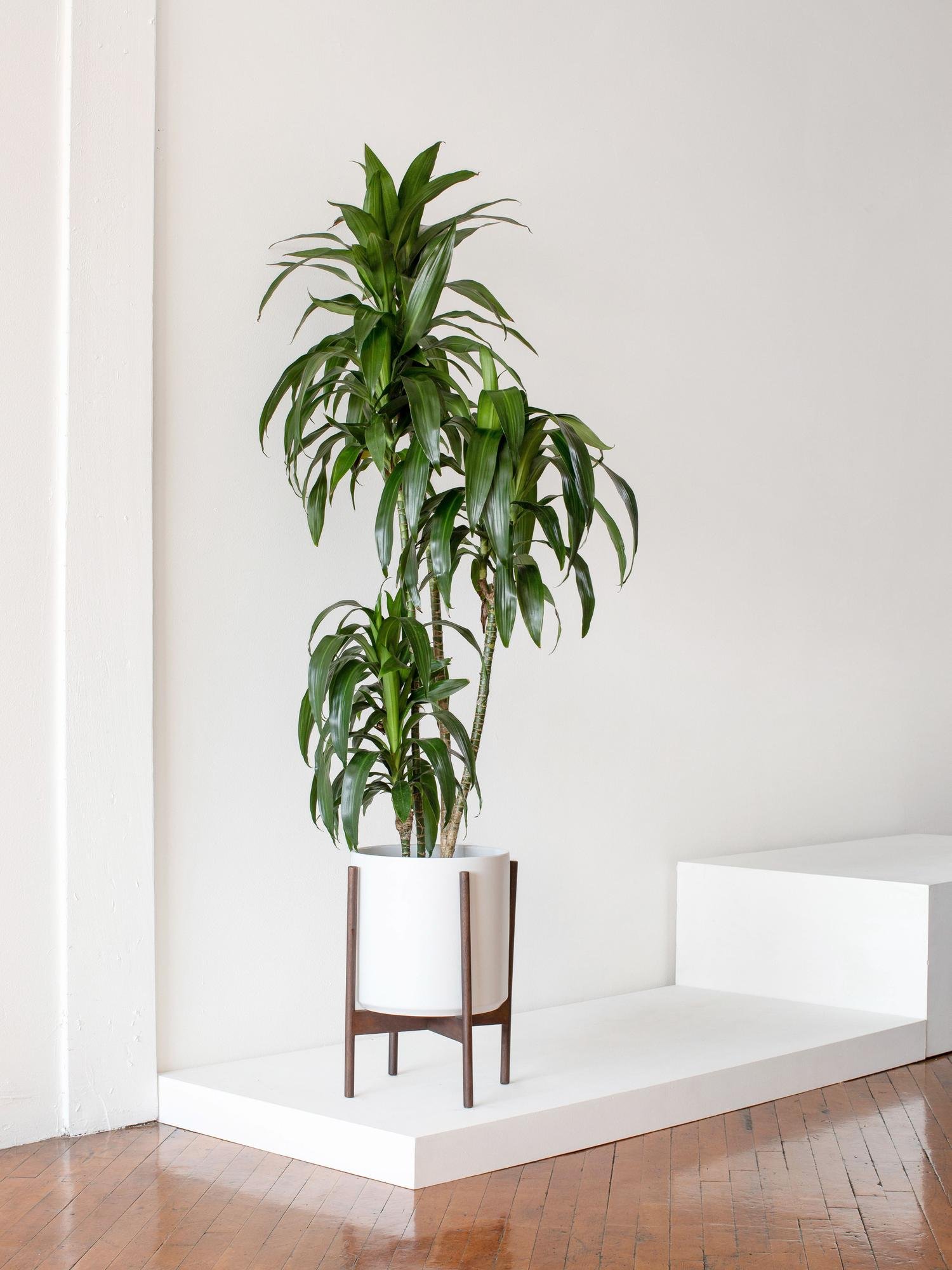The Dracaena Lisa adds a touch of elegance to any space, showcased here in a Coral Mid-Century Pot atop a Light Wood stand.
With their striking upright leaves and air-purifying qualities, Dracaenas are a sought-after choice for both seasoned indoor gardeners and newcomers to plant care alike. Originating primarily from tropical regions of Africa and Asia, Dracaenas boast resilience and adaptability, making them ideal companions for indoor environments. While these low-maintenance beauties can thrive on minimal care, providing them with the right nutrients can elevate their growth and vitality. Read on to discover the best fertilizer for all varieties of Dracaenas and how to effectively fertilize these beloved houseplants.
The Best Plant Food for Dracaenas
Understanding the NPK Ratio
Booste Vitaminé plant food: the secret for thriving plants.
When it comes to fertilizers, deciphering the NPK ratio is crucial. The NPK ratio represents the proportion of nitrogen (N), phosphorus (P), and potassium (K) in the fertilizer formulation. Different plants have distinct nutrient requirements, so selecting a fertilizer tailored to your Dracaena's needs is essential for optimal growth and health.
For Dracaenas, a balanced, all-purpose liquid fertilizer with an NPK ratio of 10-10-10 or similar is recommended. This balanced blend ensures that your Dracaena receives essential nutrients necessary for robust growth and overall well-being.
The Best Plant Food for Dracaenas
While there are various fertilizers on the market suitable for nourishing Dracaenas, consider opting for a high-quality, all-natural liquid plant food that is gentle yet effective. Our Boost Vitaminé is a premium plant food crafted to promote growth, strengthen roots, and enhance overall plant vigor. Formulated with natural ingredients, Boost Vitaminé provides Dracaenas with the nutrients they need to flourish, offering a convenient solution for your plant care routine.
Can Fertilizing My Dracaena Enhance Growth?
Dracaenas are prized for their unique foliage and air-purifying properties, but they are not necessarily fast growing plants. While Dracaenas can occasionally produce fragrant flowers, particularly when grown outdoors in optimal conditions, indoor specimens typically do not bloom. Regularly fertilizing your Dracaena will help it maintain steady growth, but again, these are not super fast growing plants.
By selecting the right fertilizer and adhering to a simple feeding regimen, you can ensure your Dracaena thrives and maintains its beauty. Dracaenas are resilient and forgiving plants, making them suitable for beginners and experienced gardeners alike.
When to Fertilize Your Dracaena
Timing plays a crucial role in fertilizing Dracaenas. These plants exhibit active growth during the spring and summer months, making this period ideal for providing them with nutrients. Incorporate a balanced liquid fertilizer into your watering routine every four to six weeks during the growing season to ensure your Dracaena receives adequate nourishment.
As fall approaches and your Dracaena enters a phase of slower growth, reduce fertilization to once every two months. During the dormant season, Dracaenas require fewer nutrients, and excessive fertilization can negatively impact their health.
By understanding the unique nutritional needs of Dracaenas and selecting the appropriate fertilizer, you embark on a journey of fostering growth, strength, and resilience in your beloved houseplants. With each carefully measured dose of plant food, you nourish not only the roots and leaves but also the spirit of your Dracaena.
Discover our curated selection of Dracaenas that will add a touch of elegance and vitality to your indoor space here.
At Léon and George, we're on a mission to bring the beauty of nature into your daily life. Our hand-selected, California-grown plants such as the Fiddle Leaf Fig Tree, Ficus Audrey, and Bird of Paradise are carefully chosen for their quality, health, and beauty. We believe in simplicity, fairness, and sustainability, sourcing our plants from trusted local growers who share our values. When you bring a Léon and George plant into your home, you're not just getting greenery – you're getting a piece of nature treated with our all-natural products and staged for optimal growth. We're here to make plant ownership accessible and enjoyable for everyone, fostering a connection between people and the natural world.
Designed to Thrive
Premium plants, potted and delivered, plus lifetime access to 24/7 Plant Doctor support.















